“He who has seen one cathedral ten times has seen something; he who has seen ten cathedrals once has seen but little; and he who has spent half an hour in each of a hundred cathedrals has seen nothing at all.”
– Sinclair Lewis, author
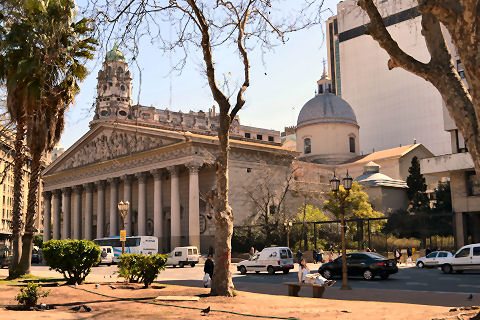
You might not even think of Buenos Aires’ Catedral Metropolitana as a cathedral, it doesn’t have that awe-inspiring soar of many of the more typically neo-gothic styles, such as the one in La Plata. And, this cathedral has gone through quite a few incarnations – first as a simple town church, built of wood and adobe in 1580, and then rebuilt in similar style in 1605 when the first one began to collapse. In fact, the history of this cathedral seems to be one of shoddy workmanship – the second church had to be replaced just a dozen years later, when it started to collapse, and was finished in 1618. Just two years later Buenos Aires was named the seat of a bishopric, giving the local church the status of a cathedral.
It wasn’t, however, until the 1660s that work got underway, and the new cathedral, with three naves and a tower (still all of wood and adobe) was finished in 1671. A mere decade later the tower and roof collapsed and while work started within a year or so, only the main building structure was completed by the end of the century. It wasn’t until the 1720s that the (now) two towers and facade were completed. And then, just three decades on, the whole central nave collapsed again. By the late 1770s the main building had been rebuilt, but its scale was out of proportion to the towers and facade which were then promptly torn down, and the cathedral was finally consecrated, sans both, in 1791 when no progress had been made on either.
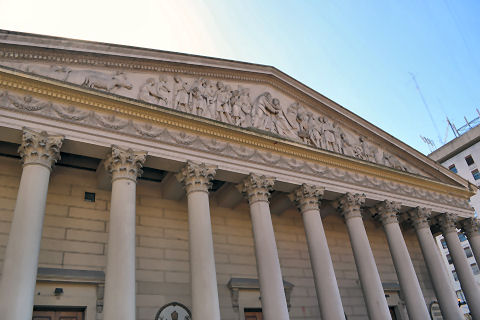
Work on the facade began in the 1820s, in a Neoclassical style and took a good forty years to complete, as the projected was halted and restarted repeatedly. The decoration wasn’t begun until 1860 and took three years – resulting in the currently existing scene of Joseph meeting his brothers and father and bringing disparate factions together – intended as an allegory for the newly formed Argentine nation. Work has continued, with rearrangements of various interior elements, the addition of a spectacular organ in the 1870s, the creation of a mausoleum for General San Martín in the 1880s, and the complete replacement of the flooring with beautiful mosaics in 1907 – the mosaics have now been under painstaking repair since 2004, work that appears to be nearly completed.
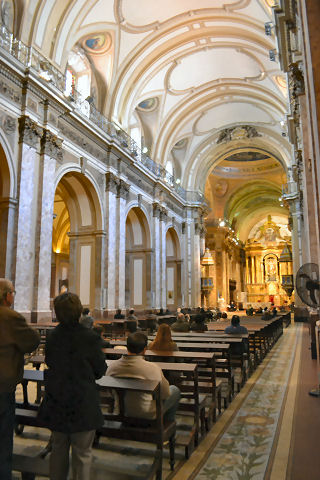
The interior design has three flanking aisles in the main nave, with a single lateral nave, essentially a classic cross form. This is the central aisle, leading to the pulpit and altar behind.
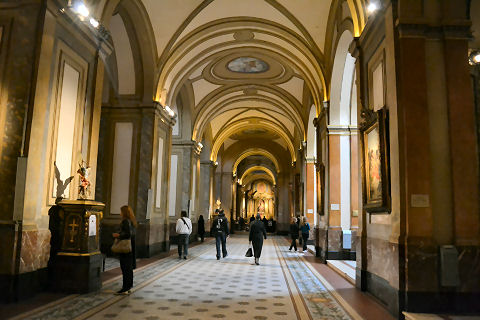
One of the side aisles, with a series of alcove chapels along the outer side – mirrored on the other side in similar fashion.
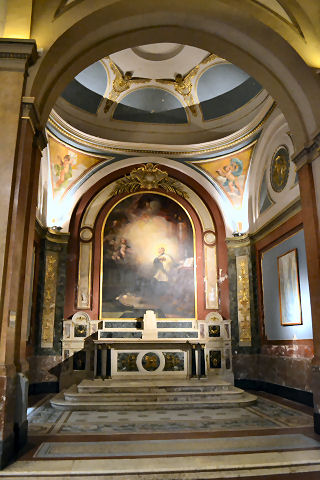
Each alcove is different – some are dedicated to one or more saints…
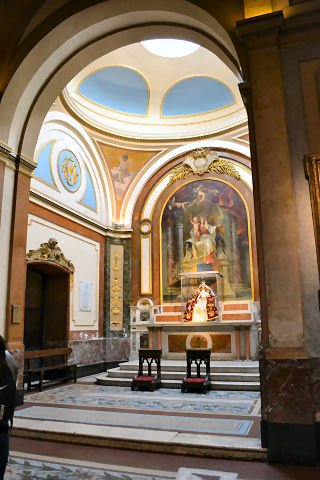
…some to one version or another of the Virgin…
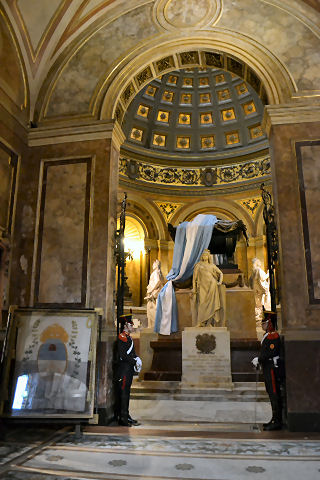
…and, of course, there’s the mausoleum for San Martín, flanked by an honor guard.
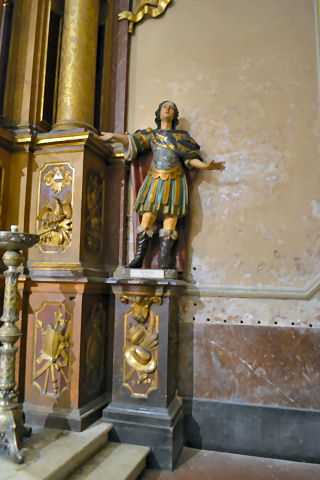
I mean no disrespect to those of the Catholic faith, but I always get a giggle when I see statues or paintings of Saint Boniface – years ago I had a priest friend who always referred to him as Saint Bunny-face, and it’s stuck in my brain.
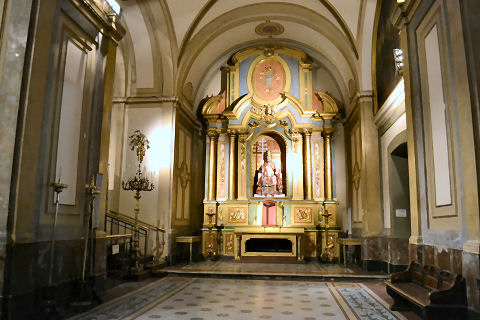
At the far end of the two side aisles are two altars, both dating from the 1800s.
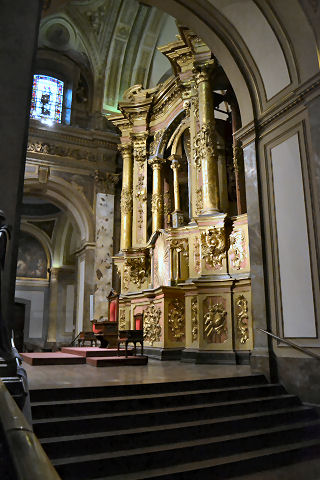
A closeup look from the side at the main altar, gilt-covered wood, dating from 1785.
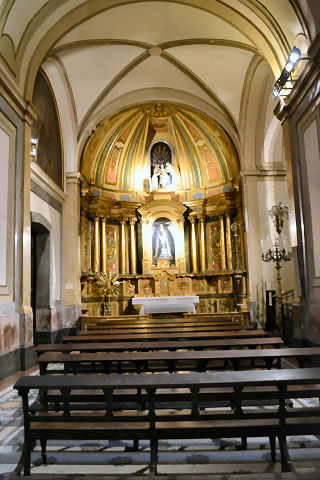
The altarpiece from the other side aisle.
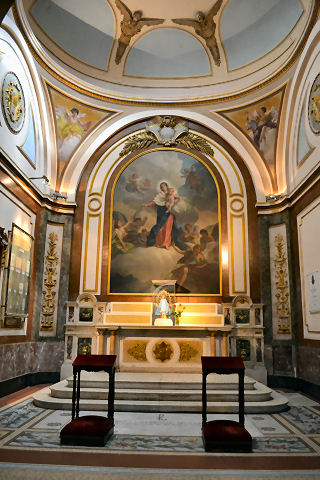
This particular chapel is dedicated to former Archbishop Antonio Cardenal Quarracino, famed as the Catholic Church’s liaison to the Jewish community. He served as Buenos Aires’ archbishop from 1990-1998 (prior to that as bishop at the cathedral in La Plata from 1985 on). He had a mural installed in the cathedral commemorating the holocaust, and created the only holocaust memorial within a Catholic cathedral that exists to this day. He was controversial on other topics, which makes him the subject of some debate – he was virulently anti-homosexual, advocating the creation of ghettos or even concentration camps within Argentina in which to place anyone with such “bestial tendencies”, he also advocated pardoning anyone involved in the infamous Dirty War of the late 70s and early 80s, and “just moving on”, stopping all investigations of crimes – and was one of the driving forces behind a legislative act that declared that to be the case in 1986 – an act which has since been struck down.
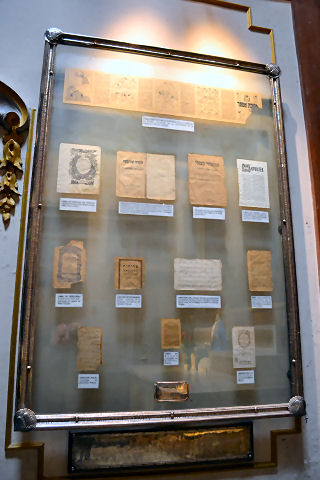
Within his little alcove this collection of prayer book covers and materials from WWII Europe and the concentration camps, donated by local Jewish families.
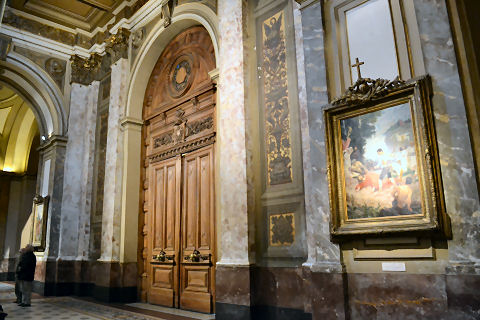
As far as I’ve seen, the main doors are never opened, and entrance and exit is from the sides of these beautiful doors – but perhaps they’re opened on special occasions. Directly above them is the balcony with the famed 3,500-pipe organ – the only way to take a photo of it is to march oneself to the center of the main aisle, almost up to the pulpit, and snap from there – and there are tourists who do so, but given that the sanctuary seems to be in use all day long and there are always people in the pews, and often a priest at the pulpit, I’ve never found a time that I was willing to violate the sanctity of that area just for a photo.
I’ve been to the cathedral many times, however I didn’t know about the Holocaust memorial. Thanks for sharing this.
Per Sinclair Lewis, though having visited this Cathedral many times, I’d missed the holocaust memorial, and was also interested to read this is the only such memorial extant in a Roman Catholic Cathedral.
Nice tour Dan, as ever!
George+